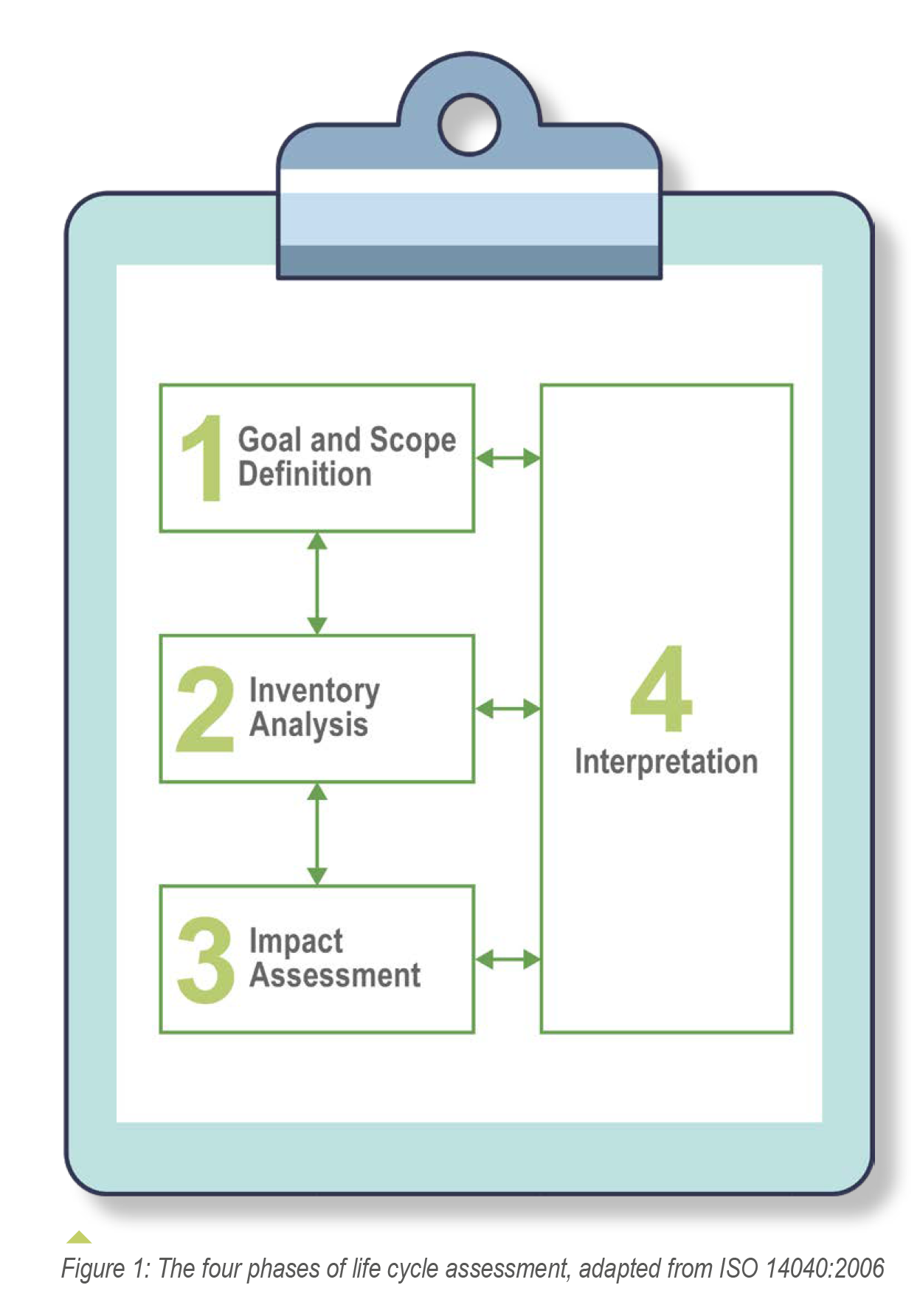ENVIRONMENTAL FOOTPRINT CALCULATION
OF PRODUCTS AND PRODUCTION PROCESSES USING THE LCA METHOD
Why are LCAs important for manufacturing companies?
Growing demands to reduce the environmental footprint of our daily lives also push manufacturing companies to contribute to the effort of overall environmental footprint reduction. These companies are increasingly confronted with stricter regulatory and customer requirements, for example, which they must adapt to in order to operate profitably in the future. True to the motto “if you can’t measure it, you can’t manage it”, one key tool for the environmental footprint reduction is the Life Cycle Assessment (LCA) which is a methodological approach for the assessment of the environmental impacts of products, processes, and services. The procedure for conducting a LCA is standardized by ISO 14040/44 and it is carried out in a stepwise approach containing four consecutive phases with the objective to create transparency about the emissions that are caused over the life cycle of a product. In this way, LCAs are a suitable tool for manufacturing companies to react to growing environmental concerns, since emission transparency allows them one the hand to quantify the environmental footprint of their goods and services and other hand identify optimization potential within their process or value chain. The article at hand therefore focuses on the manufacturing phase of the product lifecycle and explains how the environmental footprint calculation of a product can be carried out using the LCA method. In order to illustrate the described approach, the example of the manufacture of a bipolar plate for fuel cells is used.
How are LCAs carried out?
As stated above, the LCA methodology is standardized by ISO 14040/44 and usually follows a defined approach. Figure 1 illustrates the four phases of the LCA.
![]()
In the first step, the goal and 3 scope of the analysis are defined.
This includes the definition of the overall objective (“Who and what is this analysis designed for?”), the boundaries as well as the focus of the analysis. The focus of the analysis is defined through the functional unit, which is the reference point for the analysis. In the example at hand, this is the product which the LCA is carried out for, in this case a single bipolar plate. In addition, the impact categories are defined in which the emissions caused by the production of the functional unit are quantified. Here the focus is usually on greenhouse gas emissions, but other categories such as water consumption or ecotoxicity can also be considered. In the further course of the analysis, all environmental impacts that are calculated during the analysis are normalized to the functional unit. This first step therefore creates the basis for the life cycle assessment of the considered product.
![]()
In the second step, the inventory analysis is drawn up. For this purpose, all material and energy inflows and outflows into and out of the defined boundaries that are required for the manufacture of the product in question are recorded. This procedure results in the life cycle inventory (LCI) which forms the data basis for the analysis. This phase of the LCA is of significant importance for the quality, reliability, and validity of the analysis result. In a lot of cases, manufacturing companies are struggling with the compilation of a complete and valid LCI as they lack data and information of the material and energy inflows and outflows, particularly for cross supply chain considerations. For instance, many OEMs have difficulties obtaining data and information on the environmental footprint of the products they purchase from suppliers. This challenge results in the analysis results often being subject to uncertainties.
For the exemplary assessment of the environmental footprint of a bipolar plate, the production process for the bipolar plate is divided into discrete, consecutive individual steps which are then supplemented with the material and energy inflows and outflows acquired through measurements or assumptions.
![]()
In the third step, the impact assessment is carried out. The consumption of material and energy in the manufacturing process inherently results in various environmental impacts which contribute to the product’s environmental footprint. These contributions are calculated in the defined impact categories using the LCI that was compiled in the previous step. Each environmental impact is also normalized to the functional unit so that. For the assessment of the bipolar plate this means that all measured or estimated environmental impacts are normalized to the single bipolar plate that acts as the reference point for our analysis.
![]()
In the fourth and final step, the interpretation is conducted. The calculated results always need to be interpreted with consideration of the assumptions and simplifications that were made in the goal and scope definition as well as the inventory analysis.Therefore, calculated results always must be interpreted with the overall context of the analysis in mind. If, for example, certain assumptions regarding the environmental footprint of consumed materials are made due to a lack of reliable measurement results, these assumptions must be accounted for in the interpretation of the results.
Further steps, such as carrying out sensitivity analyses, must be examined in relation to the uncertainty with which the results may potentially be fraught. For the exemplary assessment of the environmental footprint of the bipolar plate, LCAs can potentially be employed for optimization of the process chain, as the industrial process for manufacturing bipolar plates is still under development. New insights into the impact of certain materials or manufacturing technologies on the product’s environmental footprint can therefore be employed for optimization purposes.

The described procedure of LCA creation can be utilized by manufacturing companies for a variety of objectives. As stated above, the LCA results can be employed to market products and services and display an advantage over competitors, if the environmental footprint is lower than that of a competitor product. Other possible applications include the analysis of a process chain and the identification of emission hotspots within the own supply and process chain.


